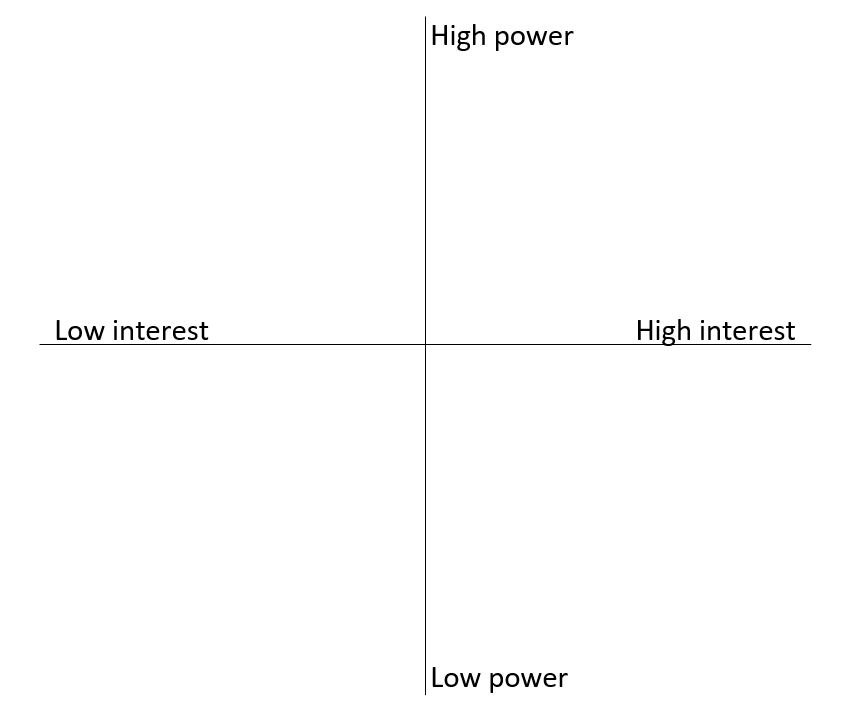3.3.2 Stakeholder Analysis
Course subject(s)
Module 3. Governing the River
Stakeholder mapping techniques
When it comes to large scale problems, like floodings, often there are many different stakeholders involved. Apart from it being a complicated technical problem, it involves humans. Different types of stakeholders are related to the situation. With all these stakeholders having different responsibilities, power, values and interest, this can become messy.

However, there are ways which can help you simplify and demarcate such a entangled stakeholder situation. There are multiple methods, but the one we will be using comes from Klijn & Koppenjan (2016). Unfortunately, this book is not openly accessible, so we will introduce the method here. It starts with demarcating the decision making process. By demarcation, you identify important events relating to the problem situation. Next, you identify a specific issue. In the issue identification you try to make clear what exactly is the root of the problem on which you efforts need to be focussed. In the following step, the identification of key actors, you start asking yourself who are actually involved? The answer to that question identifies the key actors/stakeholders. Once knowing the actors you investigate their values, interests problem perceptions and their problem perception by means of a stakeholder analysis and a materiality diagram or power-interest matrix. In this course we will be focussing more on the latter, because it is more intuitive. After the analysis, you draw conclusions and from that recommendations can be derived. Important is to note that these steps are not separate entities, but they follow from each other and are therefore interrelated.
Klijn, E. H., & Koppenjan, J. (2016). Analyzing governance networks. In Network governance in the public sector (1st ed.). Routledge.
Power-interest matrix
In order to analyze multi-stakeholder environments, it is important to be able to map stakeholders. One way of stakeholder mapping, that was introduced, is a power-interest matrix (see the picture below). A power-interest matrix is an analytical tool to analyze the power of influence and the level of interest that stakeholders hold with regards to the problem.

The matrix is divided in four quadrants based on low/high power stakeholders and low/high interest of stakeholders. High power/High interest stakeholders are regarded as the players, these are the actors that are most important and will exert their influence to protect their interests. Subjects are stakeholders that are low power/high interest. They are involved in the problem, but often do not have the means to initiate change. Context setters are stakeholders that are high power and low interest. Context setters are not very close to the problem, but can play a very significant role when they choose to commit themselves. Lastly, the crowd have low power and low interest. They are not interested in the problem, and also do not possess the means to intervene. Which stakeholders belong in which quadrant is variable for different problems with different stakeholders. Furthermore, it can depend on the governance system of the situation.
This is not part of the course material, but if you feel you could strengthen your knowledge on this topic, we have included some material here.
Existing reading materials
Good short readings on stakeholder mapping techniques are available online. You could for instance read part of the analytical toolbox of ODI: https://www.odi.org/publications/5257-stakeholder-analysis
If you are prepared to spend more time on this topic you can also check earlier (longer) TU Delft videos at http://tudelftcourses.multimediaservices.nl

Room for Rivers: Perspectives on River Basin Management by TU Delft OpenCourseWare is licensed under a Creative Commons Attribution-NonCommercial-ShareAlike 4.0 International License.
Based on a work at https://online-learning.tudelft.nl/courses/room-for-rivers-perspectives-on-river-basin-management/.



